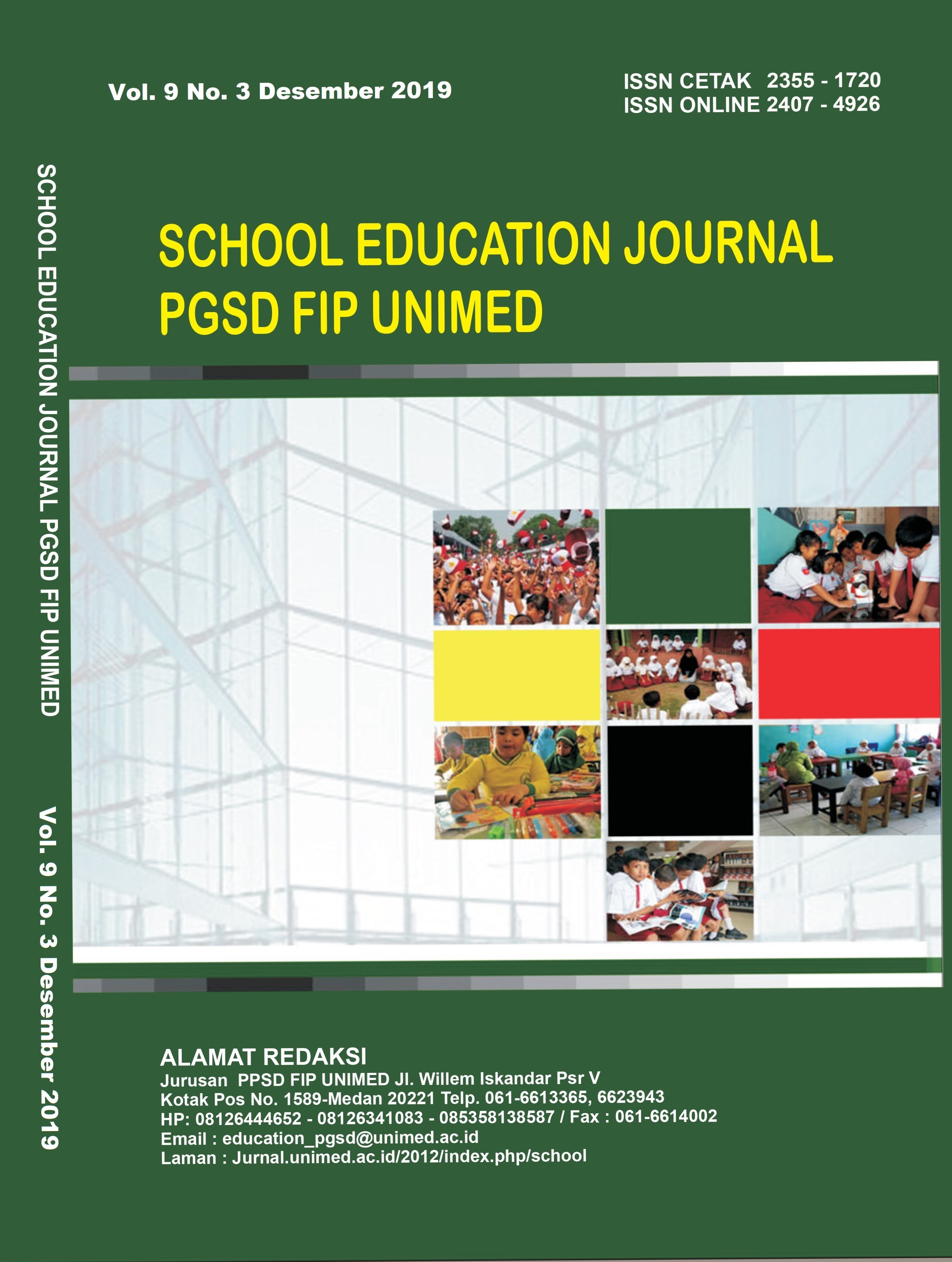PENGARUH STRATEGI MEMBACA DIRECT READING THINKING ACTIVITY (DRTA) TERHADAP SISWA SEKOLAH DASAR
DOI:
https://doi.org/10.24114/sejpgsd.v9i3.12958Abstract
Learning DRTA strategy is a suitable strategy in reading, so that research is conducted using a quasi-experiment method with nonequivalent group pretest-posttest design to see the effect seen from the pretest data in the experimental class of 10, 34, and the control class of 10.43 with an ideal score 20. In the posttest data, the average experimental class is 15.22, and the control class is 13.5, seen from the results of the pretest and posttest data, the experimental class has a higher increase in comprehension reading ability. To be clearer whether there is a difference in the ability of elementary school students, it was first tested by calculating the t-test statistic on pretest data = 0.13 ≤ = 2.00 it can be concluded that there is no significant difference. Posttest data in the t-test is obtained = 1.79 ≤ = 2.00 it can be concluded that there is no significant difference. So it can be concluded that this study has an influence on the DRTA strategy seen in the increase in the average pretest and posttest data of elementary school students.Keywords: Strategy DRTA, Elementary School Students, Nonequivalent GroupDownloads
Published
Issue
Section
License
Authors whose manuscripts are approved are approved as follows:
The publication rights for all journal manuscript materials published/published on the SEJ (School Education Journal) E-Journal site are held by the editorial board with the author's knowledge (moral rights remain with the manuscript authors).
The formal legal requirements for accessing this electronic digital journal article are subject to the terms of the Creative Commons Attribution-ShareAlike (CC BY) license, which means that E-Journal SEJ (School Education Journal) has the right to store, transfer media/format, manage in the form of a database, maintain, and publish articles without asking permission from the author as long as the author's name remains as the copyright owner.
Manuscripts published/published electronically are open access for educational, research, and library purposes.

